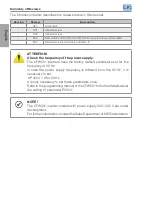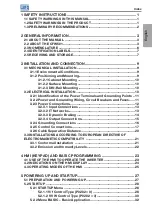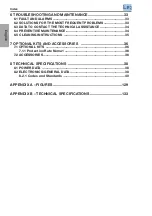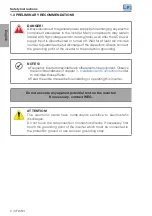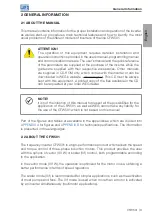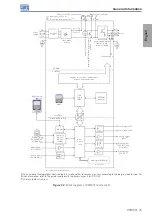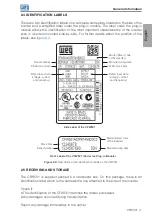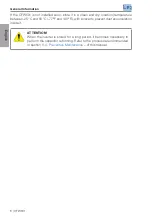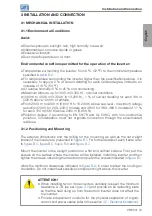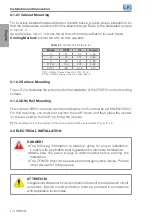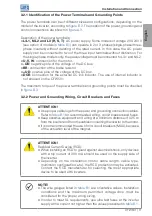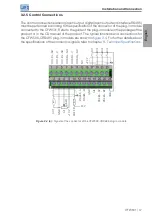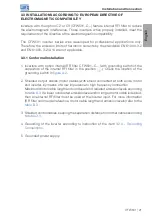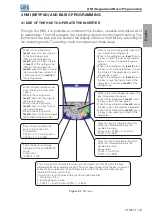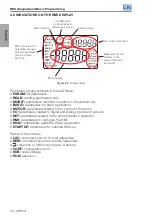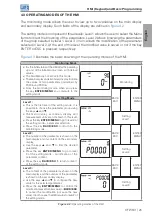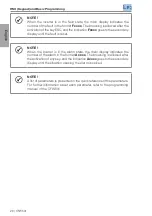
CFW501 | 11
Installation and Connection
E
ng
lis
h
3.2.1 Identification of the Power Terminals and Grounding Points
The power terminals can be of different sizes and configurations, depending on the
model of the inverter, according to
. The location of the power, grounding and
control connections are shown in
.
Description of the power terminals:
L/L1, N/L2 and L3 (R, S, T)
: AC power supply. Some models of voltage 200-240 V
(see option of models in
) can operate in 2 or 3 phases (single-phase/three-
phase inverters) without derating of the rated current. In this case, the AC power
supply can be connected to two of the three input terminals without distinction. For
the single-phase models only, the power voltage must be connected to L/L1 and N/L2.
U, V, W
: connection for the motor.
-UD
: negative pole of the voltage of the DC bus.
BR
: connection of the brake resistor.
+UD
: positive pole of the voltage of the DC bus.
DCR
: connection for the external DC link inductor. The use of internal inductor is
not allowed on the CFW501.
The maximum torque of the power terminals and grounding points must be checked
in
.
3.2.2 Power and Grounding Wiring, Circuit Breakers and Fuses
ATTENTION!
Use proper cable lugs for the power and grounding connection cables.
Refer to
for recommended wiring, circuit breakers and fuses.
Keep sensitive equipment and wiring at a minimum distance of 0.25 m
from the inverter and from the cables connecting the inverter to the motor.
It is not recommended the use of mini circuit breakers (MDU), because
of the actuation level of the magnet.
ATTENTION!
Residual Current Device (RCD):
When installing an RCD to guard against electrical shock, only devices
with a trip current of 300 mA should be used on the supply side of
the inverter.
Depending on the installation (motor cable length, cable type,
multimotor configuration, etc.), the RCD protection may be activated.
Contact the RCD manufacturer for selecting the most appropriate
device to be used with inverters.
NOTE!
The wire gauges listed in
are orientative values. Installation
conditions and the maximum permitted voltage drop must be
considered for the proper wiring sizing.
In order to meet UL requirements, use ultra fast fuses at the inverter
supply with a current not higher than the values presented in


